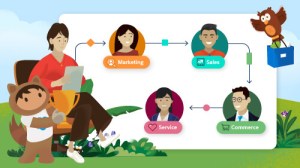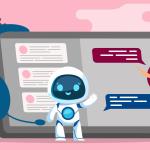To succeed in business, it’s important to understand how your customers’ needs and behaviours are changing over time. A transactional relationship is not enough anymore — you need to build long-term, trusted relationships. One way to do that is to put yourself in your customers’ shoes and understand how they interact with your business.
That’s where a customer journey map helps. An integrated customer journey map plots the various stages a person goes through when buying from your company. It lets you better understand the customer experience (CX), and will reveal where improvements can be made.
So how can you create a customer journey map and use it to improve your customer experience? Let’s start at the beginning.
Jump to a section
- What is a customer journey map?
- What does a customer journey map include?
- What are the benefits of using customer journey maps?
- How do you create a customer journey map?
- Types of customer journey maps
- Customer journey map templates
Join us virtually to hear more about how AI impacts customer journeys at Salesforce World Tour Essentials.
What is a customer journey map?
A customer journey map is a diagrammatic representation of a customer’s experience with your brand. It helps you understand the various touchpoints that customers have with your brand. It also allows you to identify pain points and opportunities for improvement.
Of course, not every customer experience is the same. Your customer journey map will show a representative journey relevant to a group of customers with similar attributes. That means you may decide to create several maps if you have significantly different audience groups.
Once you have mapped your customer journey, you can analyse it for potential problems.
Start mapping the customer journey today with our free templates.
What does a customer journey map include?
Touchpoints – Channels and interfaces where the customer interacts with your business.
Moments of truth – High-impact experiences that define how customers perceive and relate to your brand.
Potential customer feelings – Alignment of customer experiences at every stage to the most likely customer sentiment.
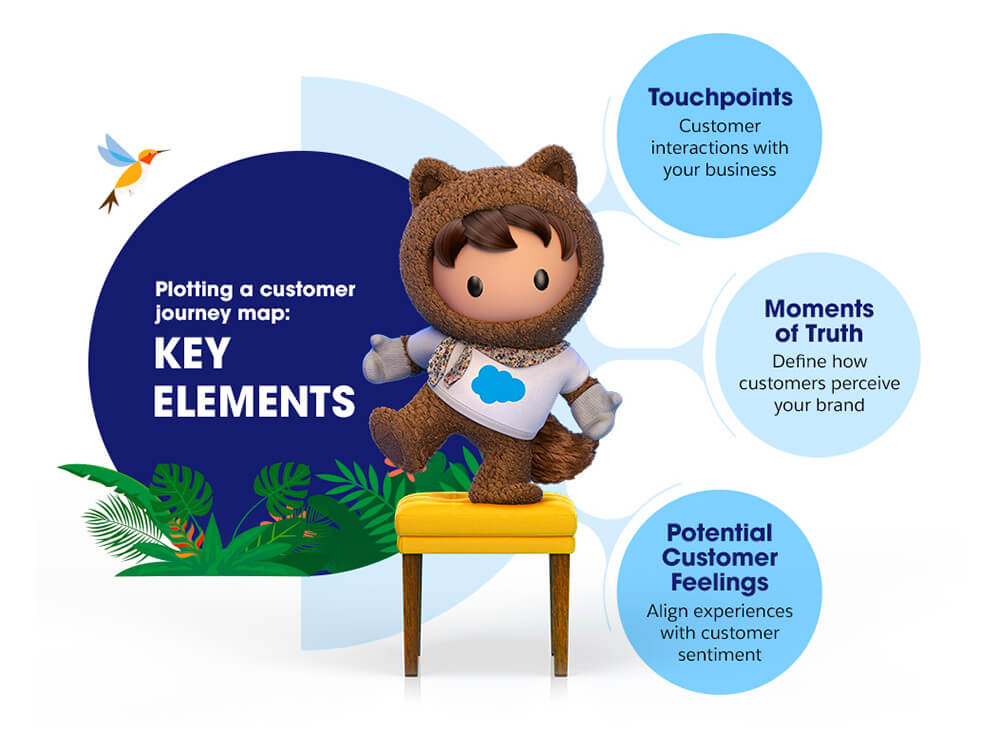
A customer journey map typically includes a timeline of events that reflects the customer’s experience throughout the entire customer lifecycle. This timeline can include events such as:
- The customer’s first visit to your website
- Social media engagement
- Marketing and sales communications
- Their first purchase — online or in store
- Product delivery
- Post-purchase support
- Interactions with customer service
When analysing your customer journey, make sure that you fine-tune it by researching and interacting with your target audiences. This ensures that the customer journey map accurately reflects their actual experience and needs, letting you create more relevant and personalised customer experiences. To achieve this, you need to combine first-party customer data and analysis with customer feedback and target audience research.
What are the benefits of using customer journey maps?
When designed using thorough research and data-led insights, a customer journey map is a powerful tool that helps businesses become more customer focused.
Here are some more benefits of using customer journey maps:
Enhances resilience and business agility
Understanding the customer experience and identifying pain points helps you develop strategies to build resilience in the face of unexpected challenges.
Customer journey mapping also helps identify the customer segments that are most impacted by disruptions like a changing economy. This helps you adjust your marketing and sales strategies to match.
Helps develop new products and boost sales
Even the most innovative products can’t help drive sales if they do not address customer needs. Customer-centric product development involves using customer feedback to create a product roadmap.
Mapping customer journeys helps you identify customer needs that are not being met by existing products or services, creating opportunities for new product development. It also enables businesses to prioritise product features and functionality based on their impact on the customer experience.
Improves customer experience and loyalty
Eighty-eight percent of customers agree that the experience a company provides is as important as its products and services.
Customer journey maps point to areas where customer experience can be improved, leading to increased customer satisfaction and loyalty. For example, you can use your maps to compare the average time taken to resolve customer queries at different points of contact. This lets you identify where support can be improved and redesigned so that queries are addressed within consistent time frames across all touchpoints.
Helps understand evolving buyer behaviour
Mapping the customer journey allows you to track the behaviour of your customers at each touchpoint, providing valuable insights into how they interact with your brand.
Customer journey mapping is not set-and-forget. Continuous monitoring lets you identify changes in behaviour, preferences, priorities, and expectations.
Optimises the CX ecosystem
Customer journey mapping is critical for a high-on-ROI customer experience ecosystem. It lets you eliminate ineffective interaction points, break down information silos, and understand data irregularities. It also helps you increase employee accountability and assess ROI on future CX investments.
Improves customer engagement
By understanding the customer’s perspective at each touchpoint, you can create more relevant and personalised experiences that enhance customer engagement across channels.
Unsure where to start?



How do you create a customer journey map?
With smart mapping tools, you can connect every interaction across email, mobile, advertising, and the web into a detailed, effective journey map.
Follow these steps to create your customer journey map:
Understand your goals
Align your customer journey map to your business goals to ensure valuable results for your organisation and your customers. For example, your goal in the current economic environment could be to identify touchpoints for intelligent automation, so you could reduce costs without impacting CX.
Conduct persona research
The journey belongs to the customer. Hence, it is vital to research persona-specific demographics and interests. It allows you to infer behaviour and patterns through the customer journey map.
Map customer touchpoints
Plotting various points of interaction in the customer journey involves tracking actions and their impact on customer behaviour. These activities could include online and offline ads, social media channels, website UI, or in-store interactions.
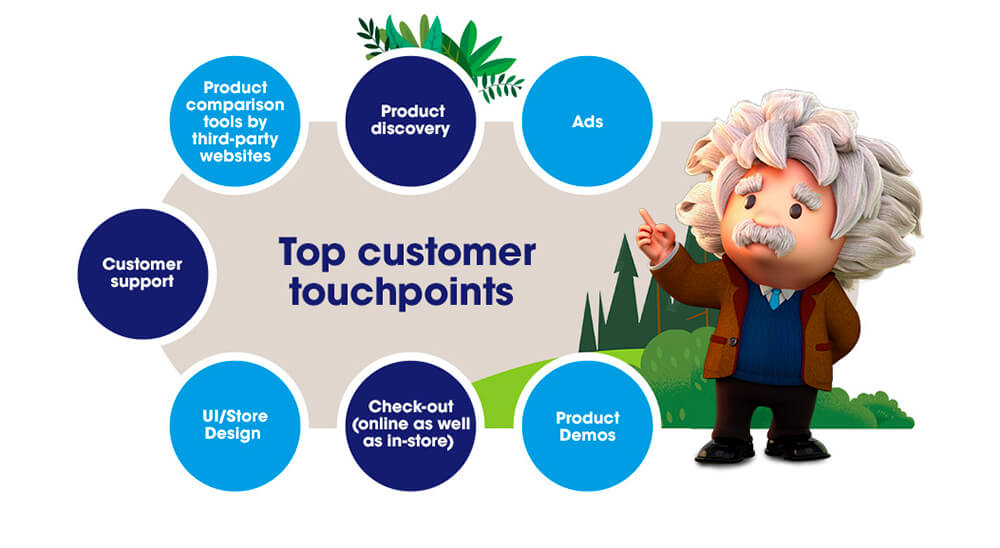
Map the current state
Wondering how to map the customer experience across the whole journey? Use data from an integrated CRM platform to get insights into customer interactions, behaviours, preferences, and pain points. This helps businesses create more effective customer journey maps that accurately reflect the customer experience. It also reveals trends and patterns in customer behaviour that may not be immediately apparent, helping you identify areas of improvement. For example, data around cart abandonment rates lets you learn which stage of customer interaction needs maximum intervention to improve checkout rates.
Visualise your ideal future state
Once you have mapped the current state of the customer experience, define the ideal future state. This lets you direct customer journeys toward your goals. For example, if you aim to unlock greater sales, you may visualise an ideal future state where customer conversion increases by 5% across the top three touchpoints. To achieve this, you can implement different strategies such as optimising website design and streamlining checkout processes. The customer journey maps help measure the effectiveness of these strategies.
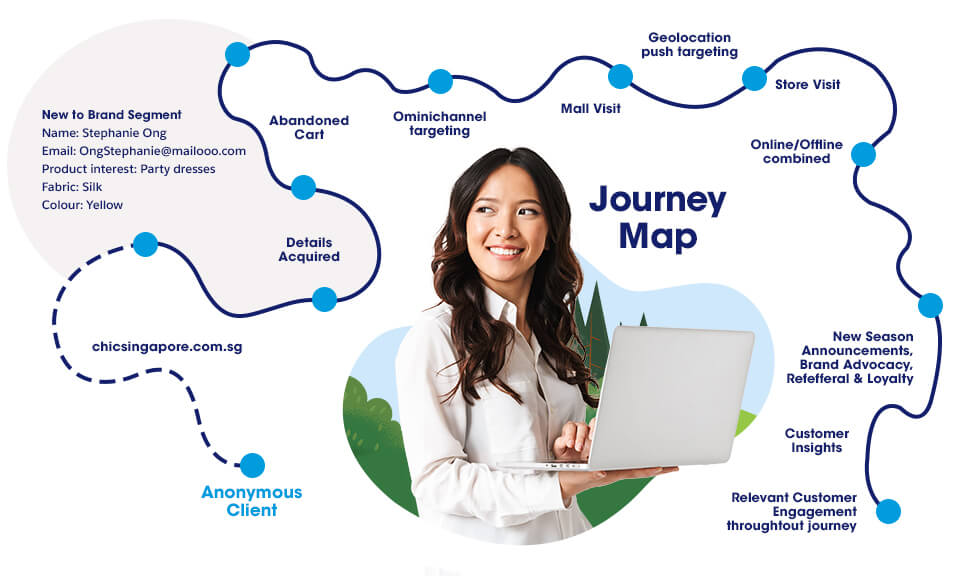
Types of customer journey maps
Each customer journey map serves a specific purpose and offers different insights. Choosing the right type will help you achieve your objectives more effectively.
A few of the most useful map types are:
- Customer experience map: Lets you measure a range of factors, such as brand consistency, purchase convenience, and service efficacy. It allows you to identify your business’s weaknesses and strengths when offering a delightful customer experience.
- Current state of the customer journey map: Beneficial for optimising operations across points of contact. It gives clear, visual insights into top-performing and least-performing touchpoints.
- Future state of the customer journey map: Helps you lay the path for multiple teams regarding future performance. For example, it informs your marketing team about the type of digital assets they should build to support the ideal customer journey.
- Empathy customer journey map: Understanding how customers feel, think, and act about your product, services, and brand is critical to business growth. This map lets you analyse customer sentiments at all engagement points and learn how and where you can make changes for maximum impact.
- Device experience journey map: In a mobile-first environment, smooth UI and UX are critical to winning and keeping customers. What works on desktop might not work on mobile — a device-focused map lets you identify gaps and opportunities for each kind of device that your customers use.
- Customer support journey map: Buyers increasingly associate customer support with the overall customer experience. This map is an effective tool for understanding the ease of access to customer support and the efficiency of your contact centre.
- Path-to-purchase journey map: In an ideal environment, customers experience a smooth and quick path to purchase. This map lets you identify how your channels perform in this context, as well as opportunities for improvement.
- Product discovery journey map: A smooth and consistent product discovery across touchpoints keeps a visiting customer engaged. Use this customer journey map for insights into the earliest interactions and experiences that shape a customer’s perception.
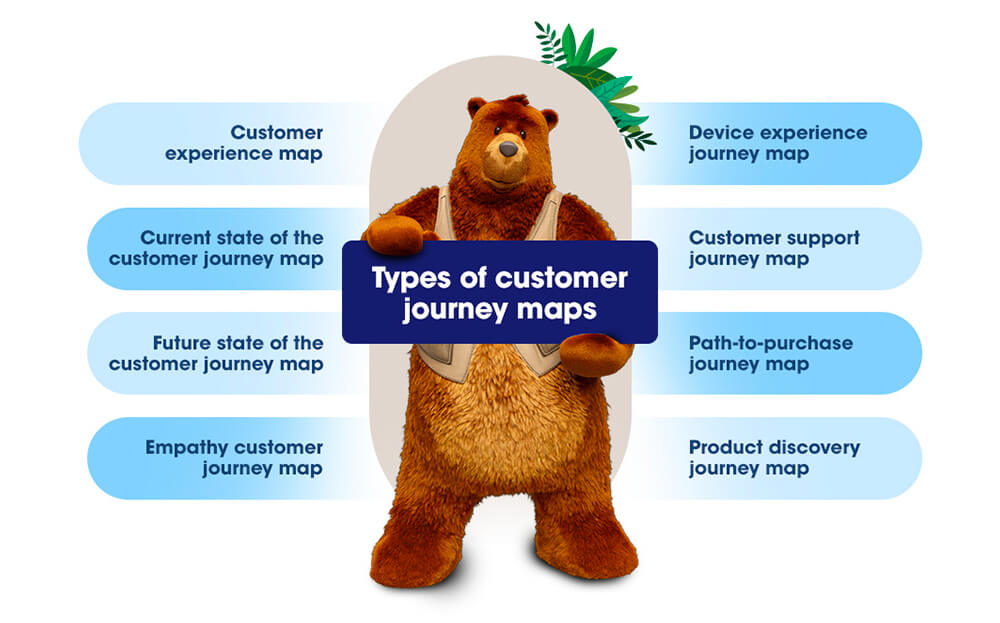
Customer journey map templates
In a digital-first customer environment, mapping integrated, complex customer journeys is time, resource, and effort-intensive. Effective customer journey management needs cross-functional collaboration as well as customer journey analytics and mapping tools.
Sounds complex? To ensure that you don’t have to start from scratch, you can use our customer journey map templates — frameworks that help simplify the process and save you precious time.
What is a customer journey map template?
A customer journey map template is a pre-designed framework that outlines the key stages and touchpoints of a typical customer journey.
A handy tool with pre-built fields, it provides a starting point for you to create your own customer journey maps, allowing you to customise the template to your specific needs and target audience. Templates may vary in design and format but typically include sections for customer goals, pain points, emotions, and actions at each touchpoint.
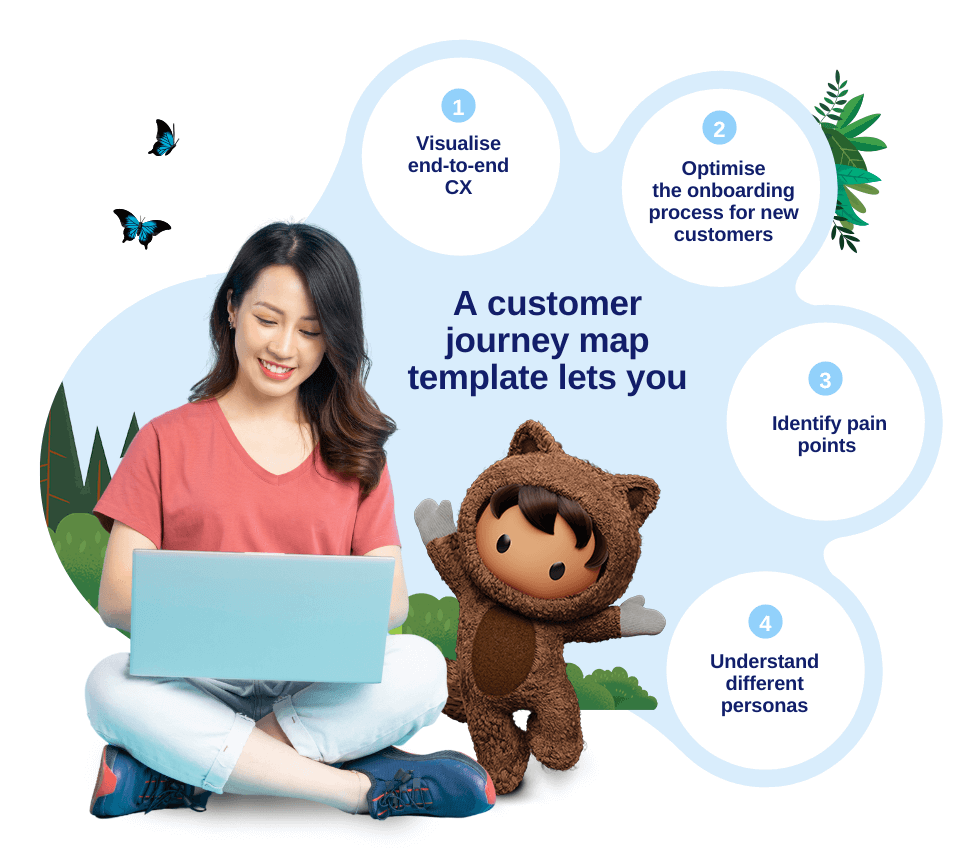
A customer journey map template helps you:
- Visualise end-to-end CX: In an omnichannel environment, designing an end-to-end customer journey map can be overwhelming. You might end up focusing too much on elements that offer little value while missing out on key factors. A template enables easier customer journey visualisation, ensuring you have all the parameters you need to picture the CX journey from start to finish.
- Ensure a satisfying onboarding experience: The initial customer onboarding experience often defines if customers will stay with you in the long run. An effective customer journey map template ensures that you cover all the necessary steps in the onboarding journey, letting you optimise and enhance the customer experience at this crucial interaction.Unresolved customer pain points are the fastest way to lose business. Customer journey map templates provide structured frameworks that outline each step of the customer journey, making it easier for you to quickly identify areas of friction and implement solutions.
- Understand different customer personas: Templates enable you to understand and analyse customers based on customer journey mapping goals. For example, a product discovery map template may quickly let you categorise customers into:
- Review-led customers
- Ad-driven customers
- Brand content consumers
What does a sample customer journey map look like?
Here is an example of a customer journey map for a SaaS company, outlining the ideal customer journey for a new product:
- Awareness: The customer becomes aware of the product through social media, online ads, or word-of-mouth recommendations.
- Consideration: The customer explores the product’s features on your company’s website. They may look at product demos, customer reviews, and pricing information.
- Purchase: The customer makes a purchase online, through a sales representative, or through a reseller.
- Onboarding: The customer receives a welcome email or call and is guided through the setup process, including account creation, data import, and training.
- Adoption: The customer starts using the product in their day-to-day business.
- Optimisation: The customer discovers advanced features and integrations, receives ongoing training and support, and provides feedback to the company.
- Renewal: The customer renews their subscription or upgrades to a higher tier, based on their evolving business needs and goals.
By mapping out this customer journey, the SaaS company can better understand the customer’s needs and pain points at each stage, and tailor their communication and support accordingly.
Customer journey mapping is becoming increasingly important for organisations looking to improve their overall business results. By identifying pain points and developing strategies for improvement, customer journey mapping is your golden ticket to winning and keeping customers, engaging more efficiently, and building lifelong trusted relationships.
